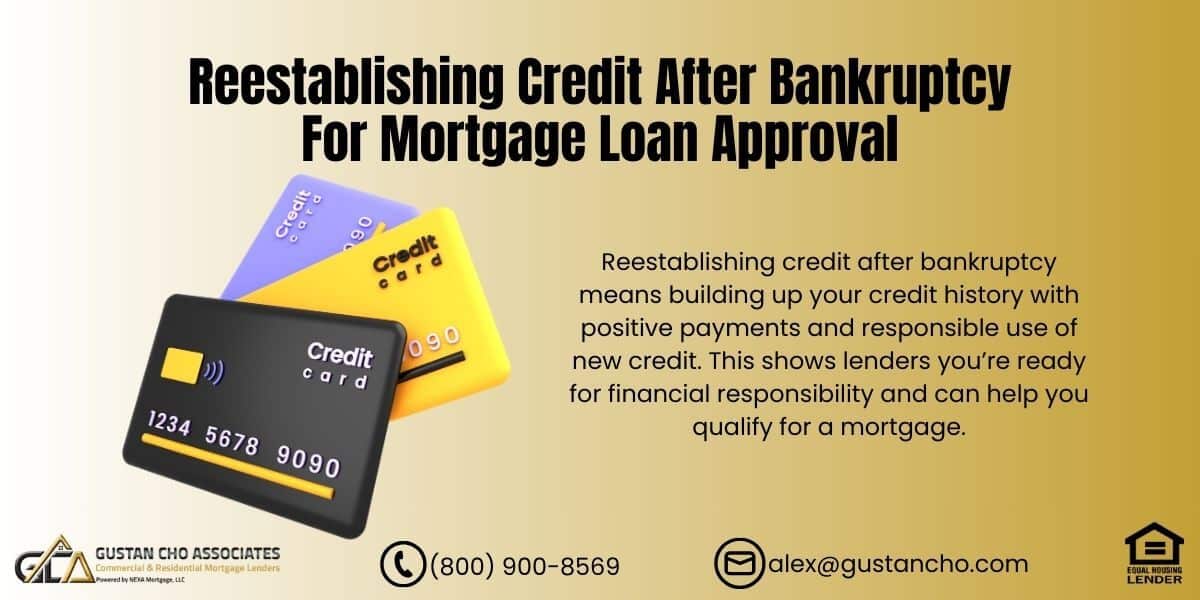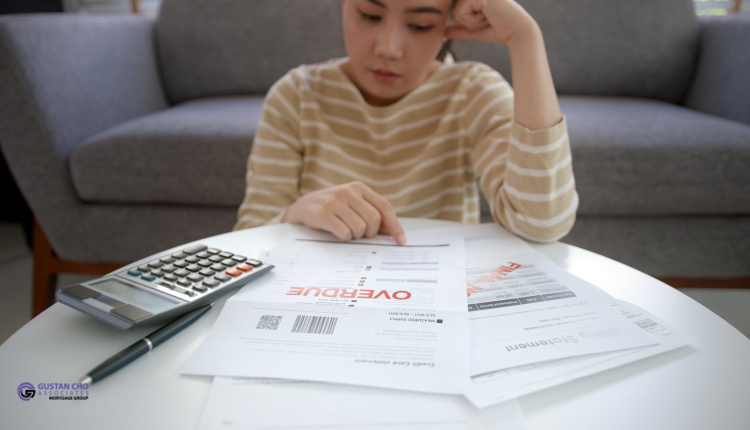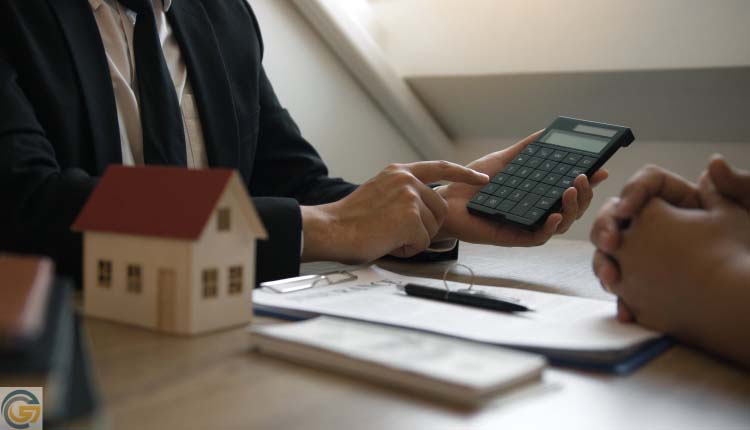Reestablishing Credit After Bankruptcy: Your Step-by-Step Guide to Homeownership in 2024
Going through bankruptcy is tough, but it doesn’t mean you’re locked out of a bright financial future. Reestablishing credit after bankruptcy is not only possible—it’s the key to unlocking new opportunities, including buying or refinancing a home. In this guide, we’ll walk you through proven strategies to rebuild your credit score, meet mortgage requirements, and be prepared to buy the home of your dreams. Let’s get started on the road to recovery!
Why Reestablishing Credit Matters
Rebuilding credit after bankruptcy isn’t just about boosting your score; it’s about getting back on track for future opportunities. Mortgage lenders want to see that you’re handling credit responsibly. By reestablishing credit after bankruptcy, you’re showing that you’re ready for a fresh start—and opening doors to better loan rates, mortgage prequalification, and a stronger financial position.
Step 1: Start With Secured Credit Cards
Getting a secured credit card is one of the fastest ways to boost your score. A secured card requires a small deposit (usually $300 to $500), which becomes your credit limit. You use it like any other credit card and pay off the monthly balance. Every on-time payment you make is reported to credit bureaus, adding positive marks to your credit report.
Why Secured Cards Are Effective for Rebuilding Credit:
- Builds Trust With Lenders: Secured cards show lenders you’re committed to managing credit responsibly.
- Improves Your Credit Score: Your secured credit card payments are submitted to the credit bureaus every month, potentially boosting your credit score by 20 to 50 points.
- Sets the Stage for Bigger Loans: After 6-12 months of on-time payments, some secured cards offer unsecured credit cards.
2024 Tip: Choose a secured card with no application fee and report to all three credit bureaus (Experian, TransUnion, and Equifax). The more bureaus your payments reach, the faster your credit score improves.
Step 2: Add Credit-Builder Loans to Boost Your Score
A credit-builder loan is another helpful tool for reestablishing credit after bankruptcy. Unlike regular loans, the amount you borrow sits in a savings account. Each month, you make small payments, which are reported to the credit bureaus. Once you’ve paid off the loan, you’ll receive the funds in the savings account.
How Credit-Builder Loans Help You:
- Affordable Monthly Payments: Payments are usually small, making it easy to stay on track.
- Positive Impact on Your Credit Report: Like secured cards, every on-time payment on a credit-builder loan boosts your score.
- Saves Money While Rebuilding Credit: Since the loan amount goes into a savings account, you’re essentially saving money while raising your credit score.
Several banks and credit unions provide these loans, but it’s important to compare options to select one that reports to all credit bureaus.
Step 3: Monitor Your Credit Report Regularly
Checking your credit report after bankruptcy is important. Sometimes, errors or outdated information can pull your score down and affect your progress. Make it a habit to check your credit report every few months to ensure everything looks correct.
What to Look For:
- Accounts Marked as Discharged: Ensure that debts included in your bankruptcy are marked as discharged and show a $0 balance.
- No New Late Payments: A single late payment post-bankruptcy can lower your score and make lenders hesitant. Stay current on all bills to keep your profile clean.
- Correct Information on All Three Reports: Review reports from Experian, Equifax, and TransUnion. If you see mistakes, file a dispute with the credit bureau to correct them.
By staying on top of your report, you’ll better understand your progress and be prepared to meet mortgage requirements when the time is right.
Step 4: Budgeting Tips for Success
Creating a realistic budget is essential for rebuilding credit after bankruptcy. Budgeting doesn’t have to be complicated, but it does need to cover all your expenses while giving you a chance to save and avoid falling behind on payments.
Building a Simple Budget:
- List Your Income and Expenses: Track all monthly income and bills, including rent, utilities, groceries, transportation, and debt payments.
- Set a Small Savings Goal: Contributing even a little each month can be beneficial. Establishing an emergency fund is essential as it gives financial security and reduces reliance on credit during urgent situations. These savings act as a safety net and can help you manage unexpected expenses without incurring debt.
- Track Your Spending: Regularly monitor your expenses and adjust to avoid overspending.
Budgeting can help prevent credit issues from arising again, giving you a stronger foundation to build from.
Ready to Reestablish Your Credit After Bankruptcy? Let’s Get You Approved for a Mortgage!
Contact us today to learn how we can help you qualify for a mortgage loan.
Timeline for Rebuilding Credit After Bankruptcy
Reestablishing credit after bankruptcy is a process, but it can move faster than you think if you stick to a plan. Here’s a general timeline to give you an idea of what to expect:
6 Months After Bankruptcy Discharge:
- If you’ve added a secured card and/or credit-builder loan, your credit score should show some improvement.
- Keep all payments on time, and try to keep balances low (under 30% of the card’s limit) for the best results.
1 Year After Bankruptcy Discharge:
- Your credit profile may look much stronger. Some lenders might be open to prequalifying you for a loan at this stage.
- If needed, you might consider applying for a second secured card to add another positive credit line.
2 Years After Bankruptcy Discharge:
- After two years of clean credit history, you’ll have more options, including government-backed mortgages like FHA loans.
- Your score may be high enough to qualify you for traditional credit cards, car loans, and, in some cases, mortgage loans.
There is a three-year waiting period after Chapter 7 Bankruptcy, foreclosure, deed-in-lieu of foreclosure, or short sale to qualify for a USDA loan. There is a four-year waiting period after Chapter 7 Bankruptcy, deed-in-lieu of foreclosure, and short sale to qualify for a conventional loan. There is a seven-year period after a foreclosure to qualify for conventional loans.
Consistency and patience are key. These milestones show how each step can help you progress toward better credit and potential homeownership.
Getting Prequalified for a Mortgage After Bankruptcy
Once you’ve worked on reestablishing credit after bankruptcy, you’re ready to start thinking about getting prequalified for a mortgage. Mortgage lenders look for signs that you’ve rebuilt a positive credit history and demonstrated responsible use of credit.
Steps to Get Prequalified:
- Meet Basic Requirements: For FHA loans, lenders generally want to see two years from your bankruptcy discharge date. A stable job history also helps.
- Show Reestablished Credit: Lenders will look for beneficial credit accounts that demonstrate no late payments, like a secured credit card or a credit-builder loan.
- Gather Documentation: Be ready to present documentation of your income, bank statements, tax documents, and details regarding any existing debts.
Pro Tip for 2024: FHA loans tend to be more flexible for those with bankruptcy in the past and often have lower credit score requirements. This could be a good option if you’re looking to buy soon after reestablishing credit. Gustan Cho Associates also offers non-QM loans one day out of bankruptcy. We will also cover the basic guidelines of alternative finance home mortgages for homebuyers who want to purchase a home and qualify for a mortgage before the mandatory waiting period.
Encouragement and Final Tips for Long-Term Success
Remember, reestablishing credit after bankruptcy isn’t a sprint—it’s a marathon. Take things one step at a time, and don’t get discouraged. Building good credit habits now will make it easier to maintain a strong credit profile in the long run.
Key Tips for Staying on Track:
- Pay All Bills on Time: Even small bills, like utilities or cell phones, can impact your credit.
- Keep Balances Low on Cards: To avoid negative marks, aim to keep your credit card balances below 30% of their maximum amount of negative impact.
- Avoid Applying for Too Much Credit: Each time you inquire about credit, it can negatively impact your score, so seek new credit only when necessary.
Your efforts today will pay off in the long run. Each on-time payment and every positive mark on your credit report is one step closer to buying a home and achieving financial stability.
Looking to Buy a Home After Bankruptcy? Let’s Reestablish Your Credit for Mortgage Approval!
Reach out now to see how we can help you on your path to homeownership.
A Final Word: The Power of Persistence
Reestablishing credit after bankruptcy can be challenging, but it’s absolutely achievable. The tools are available—secured cards, credit-builder loans, budgeting, and credit monitoring. Stay consistent, and you’ll be back on track before you know it.
When you’re ready to take that next big step and prequalify for a mortgage, Gustan Cho Associates is here to help guide you. With the right support and persistence, you’ll hold the keys to your new home in no time.
Ready to start your journey? Contact us today at 800-900-8569 or alex@gustancho.com for personalized guidance and support in rebuilding your credit and achieving homeownership.
Frequently Asked Questions About Reestablishing Credit After Bankruptcy:
Q: What Does Reestablishing Credit After Bankruptcy Mean?
A: Reestablishing credit after bankruptcy means building up your credit history with positive payments and responsible use of new credit. This shows lenders you’re ready for financial responsibility and can help you qualify for a mortgage.
Q: How Soon Can I Start Reestablishing Credit After Bankruptcy?
A: You can start right away after your bankruptcy is discharged. Many people begin with a secured credit card or a credit-builder loan to quickly build a positive payment history.
Q: What is a Secured Credit Card, and How Does it Help Reestablish Credit?
A: A secured credit card needs a modest deposit as your credit limit. By consistently making on-time payments, this card assists in restoring your credit. It communicates your positive payment history to credit bureaus, which can gradually enhance your credit score.
Q: Can I Get a Mortgage After Bankruptcy?
A: Yes, but lenders usually want to see you reestablishing credit after bankruptcy. FHA loans, for example, often require a 2-year waiting period from the bankruptcy discharge date, along with proof of reestablished credit.
Q: How Long Does Reestablishing Credit After Bankruptcy Usually Take?
A: It varies, but many people see improvements within 6 months with secured credit cards or credit-builder loans. You might be ready to prequalify for a mortgage after 1-2 years of responsible credit use.
Q: What’s the Difference Between a Secured Credit Card and a Credit-Builder Loan?
A: A secured credit card is backed by a deposit, allowing you to build credit through regular payments. A credit-builder loan involves funds in a savings account that you pay off over time. Both options report to credit bureaus, helping to reestablish credit after bankruptcy.
Q: Can I Buy a Car While Reestablishing My Credit?
A: You can, but avoiding large new debts while reestablishing credit after bankruptcy is best. An auto loan could impact your debt-to-income ratio, which is important when preparing for a mortgage.
Q: Do I Need to Check My Credit Report While Reestablishing Credit?
A: Yes, reviewing your credit report regularly helps you spot errors and track your progress. It’s especially important after bankruptcy to make sure everything on your report is accurate.
Q: How Does Budgeting Help with Reestablishing Credit After Bankruptcy?
A: Budgeting helps you stay on track with payments and avoid future credit issues. Planning out your income and expenses makes you less likely to miss payments, strengthening your credit profile.
Q: Is Reestablishing Credit After Bankruptcy Worth it?
A: Absolutely. Reestablishing credit opens the door to better loan options, lower interest rates, and potentially qualifying for a mortgage. It takes time, but the payoff is worth the effort, especially if buying or refinancing a home is one of your goals.
This blog about “Reestablishing Credit After Bankruptcy For Mortgage Approval” was updated on October 29th, 2024.
Need Help Rebuilding Credit After Bankruptcy? Let’s Get You Ready for Mortgage Approval!
Contact us now to learn the steps you can take to qualify for a mortgage.










